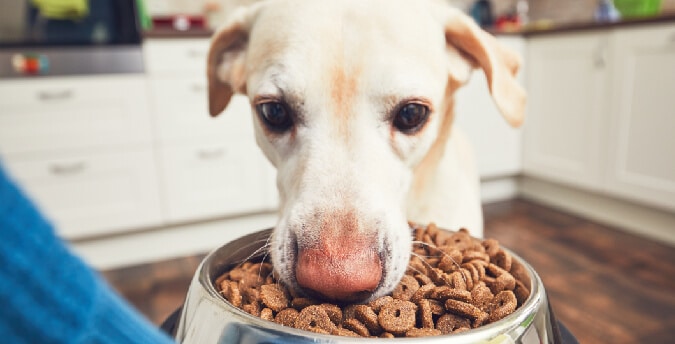How to Transition Your Dog to New Food

Getting your beloved canine to eat is most likely never a problem. They are usually running to their bowl or waiting patiently with their tail wagging to have dinner. There are times in your dog’s life when you will have to switch their food. These transitions will help your dog to maintain their health at all times in their lives. Here are some reasons or times in your dog’s life when you will have to know how to transition them from one food to another.
From Puppy to Adult
Your puppy becomes an adult dog after twelve months and need to be fed adult dog food so that they eat the proper nutrients to be a healthy canine.
Large Breeds v. Small Breeds
Make sure that you choose the dog food specific to your size of dog as they also will vary in nutrients needed based on size.
Elderly Dogs
It may sound crazy now, but once small dogs hit the age of seven and large breeds are five years old, they need to be eating senior dog food to ensure they get the extra vitamins and nutrients in their old age.
Pregnant or Nursing
If you dog are pregnant or already nursing her band of puppies, she needs to be eating puppy food to ensure she has the extra calcium.
Medical Reasons
Perhaps your dog has an allergy or medical condition that requires a special diet. You will need to follow your veterinarian’s instructions for their diet.
The Process
How to transition your pet from a new dog food, no matter the situation? The answer is to do so slowly over the course of a week.
Days One to Two
Fill your dog’s bowl with a quarter of new food and three-fourths old food.
Days Three to Four
Fill your dog with a fifty-fifty ratio of new and old food.
Days Five to Six
Fill your dog’s bowl with three fourths of new food and one fourth of old food.
Day Seven
On the last day, fill your dog’s bowl with only new food.
Throughout this transition process from old to new food, watch how your dog is reacting. Are they eating all of their food or are they pushing the new food around to only eat their old food? This can help you adjust the process, perhaps they don’t enjoy that particular brand of dry dog food and you will have to try another or maybe they need a longer transition time. This back and forth can be frustrating, but the process will be worth it in the end when your dog is eating the right food for them and maintaining a healthy lifestyle. As each dog is different and some food choices are breed specific, be sure to check with your veterinarian about the best type of diet and food brand for your dog.
